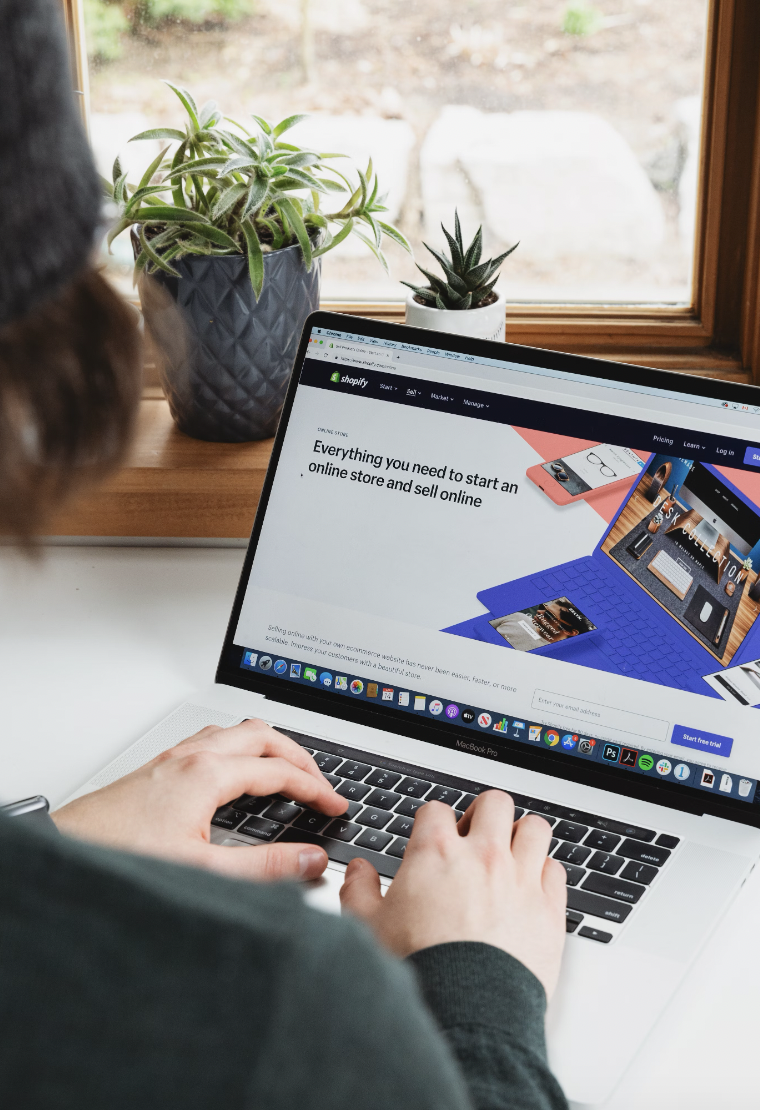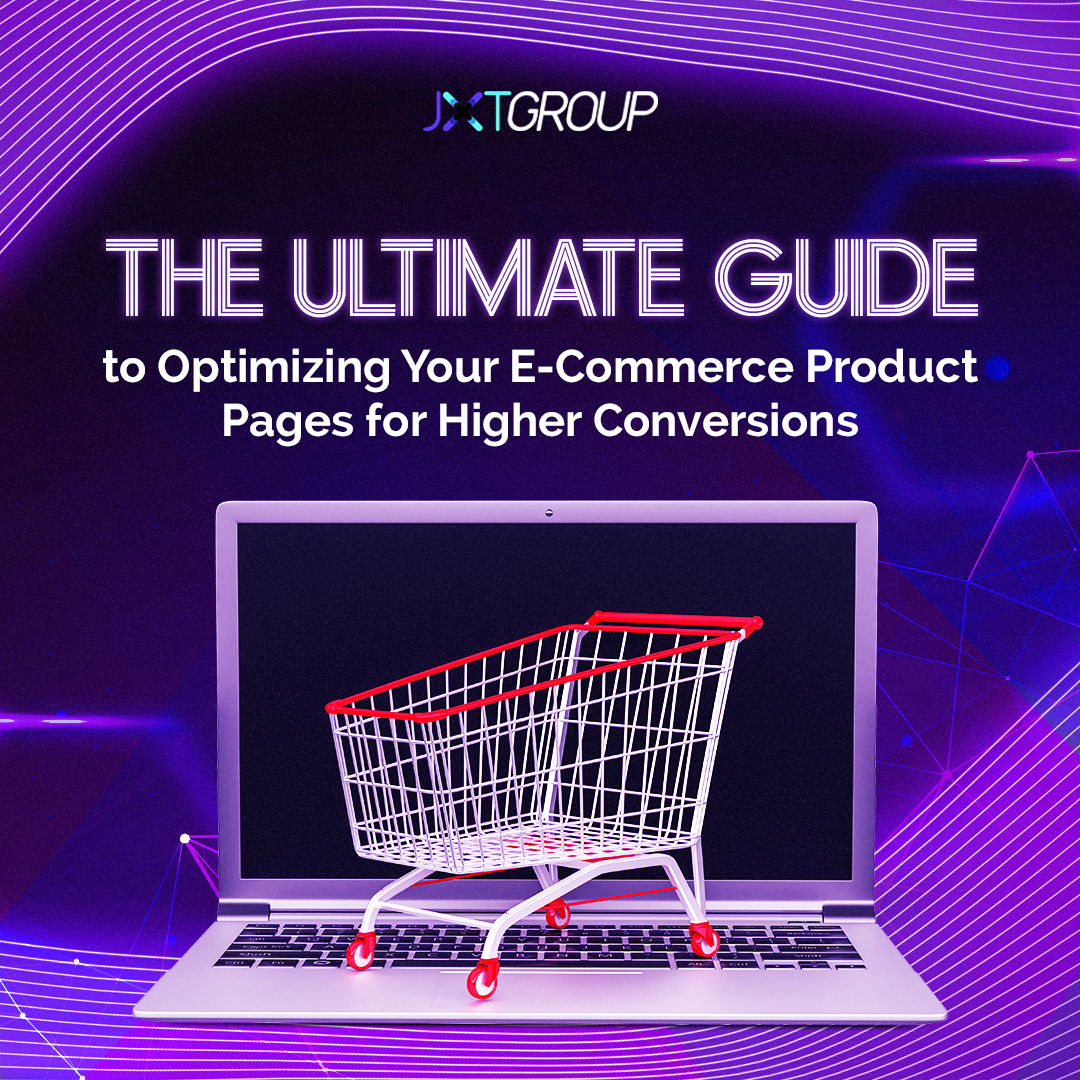E-Commerce is projected to grow 8% or more each year over the next several years, and in 2023, it’s estimated that more than 2.6 billion customers will complete a purchase online. In this fiercely competitive marketplace, every detail matters when it comes to converting visitors into paying customers.
Your product pages serve as the digital storefront of your online business, and optimizing them is crucial for success. Whether you’re a seasoned e-commerce veteran or just starting out, this guide will provide you with a comprehensive roadmap to improving your e-commerce product page conversions.
Here are 7 key strategies your business needs to know to optimize your product pages for increased sales:
1. Craft Compelling Copywriting 
The words you use to describe your products play a pivotal role in capturing the attention and trust of potential customers. Here’s how to create persuasive and informative product descriptions:
- Highlight Benefits, Not Just Features: Instead of merely listing product features, explain how they benefit the customer. For instance, instead of saying “Has a 12-megapixel camera,” say “Capture stunning photos with the high-resolution 12-megapixel camera for vivid memories.”
- Use Clear and Concise Language: Keep your descriptions concise and easy to understand. Avoid jargon or technical terms that might confuse potential buyers.
- Tell a Story: Weave a compelling narrative around your product. Explain its origins, how it solves a problem, and how it can enhance the customer’s life.
- Leverage User-Generated Content: Incorporate customer reviews and testimonials into your product descriptions. This builds trust and demonstrates social proof.
2. Showcase High-Quality Imagery
Images are the heart of your product page. They should be visually appealing and informative. Follow these best practices for image optimization:
- High-Resolution Photos: Use high-quality, high-resolution images that allow customers to zoom in and examine the product closely.
- Multiple Angles: Provide multiple images from different angles to give customers a comprehensive view of the product.
- Lifestyle Imagery: Show your product in action. Display it in real-life scenarios to help customers envision how it fits into their lives.
- Video Content: Consider using product videos to demonstrate how the product works, its features, and benefits. Videos can boost conversion rates significantly.
3. Create Persuasive Calls-to-Action (CTAs) 
Effective CTAs guide visitors toward taking action. To improve product page conversions, you need persuasive CTAs that encourage users to make a purchase. Here’s how:
- Clear and Actionable Language: Use clear and action-oriented language in your CTAs. Phrases like “Add to Cart,” “Buy Now,” or “Get Yours Today” leave no room for ambiguity.
- Contrasting Colors: Make your CTA buttons stand out by using contrasting colors that draw attention. A well-designed button will increase click-through rates.
- Limited-Time Offers: Create a sense of urgency with phrases like “Limited Time Offer” or “Hurry – Only 2 Left in Stock.” Scarcity and urgency can drive immediate action.
- Trust Signals: Incorporate trust badges, such as security icons or satisfaction guarantees, near your CTAs to instill confidence in potential customers.
4. Optimize for User-Friendly Layouts
A cluttered or confusing product page layout can deter potential buyers. Instead, opt for clean, intuitive designs that enhance the user experience:
- Mobile Responsiveness: Ensure your product pages are fully responsive and optimized for mobile devices. An increasing number of customers shop using smartphones and tablets.
- Easy Navigation: Make it effortless for customers to find essential information, such as product specifications, pricing, and reviews. Use clear headings and sections.
- Load Speed: Slow-loading pages can frustrate visitors and lead to high bounce rates. Optimize images and code to ensure fast page loading times.
- Intuitive Flow: Guide customers through the buying process with a logical flow. The journey from product discovery to checkout should be seamless and intuitive.
5. Implement A/B Testing
Optimizing your product pages is an ongoing process. A/B testing is a powerful tool that allows you to compare different elements of your page to see which ones result in higher conversions. Here’s how to do it effectively:
- Identify Variables: Start by identifying the elements you want to test. It could be your CTA button color, the placement of product images, or the length of your product descriptions.
- Create Variations: Develop multiple versions of your product pages with the specific changes you want to test. Ensure that each variation is distinct and isolates a single variable.
- Split Traffic: Use an A/B testing tool to split your website traffic between the different variations. This ensures that you can accurately measure the impact of each change.
- Analyze Results: After a sufficient amount of data has been collected, analyze the results. Identify which variation performs better in terms of conversions.
- Iterate and Repeat: Based on your findings, implement the changes that led to higher conversions. Then, continue testing and iterating to further optimize your product pages.
6. Monitor and Analyze User Behavior 
To continually improve your product pages, you must understand how users interact with them. Here’s how to monitor and analyze user behavior:
- Use Analytics Tools: Employ analytics tools like Google Analytics to track user activity on your product pages. Monitor metrics such as bounce rate, time on page, and conversion rate.
- Heatmaps: Heatmap tools provide visual insights into where users click, move their mouse, and spend the most time on your pages. This can help you identify areas that need improvement.
- User Testing: Conduct user testing sessions to gather direct feedback from real users. This qualitative data can reveal usability issues and pain points that you might have overlooked.
- Conversion Funnel Analysis: Analyze the conversion funnel to identify drop-off points in the user journey. Addressing these bottlenecks can significantly boost conversions.
7. Build Trust and Credibility
Customers are more likely to make a purchase when they trust the brand and feel confident in their decision. Here’s how to build trust and credibility on your product pages:
- Contact Information: Display clear contact information, including a customer support email or phone number. This shows that you are accessible and responsive.
- Security Measures: Highlight your website’s security features, such as SSL encryption, to assure customers that their personal information is safe.
- Return Policy and Guarantees: Clearly outline your return policy and any satisfaction guarantees. This reduces the perceived risk of making a purchase.
- Customer Reviews: Encourage and showcase customer reviews and ratings. Genuine feedback from previous buyers can help build trust.
Remember, every detail counts in the competitive world of e-commerce, and the effort you invest in optimization will pay off in increased sales and long-term success for your online business.
If you need additional optimization insights customized to your unique e-commerce business, our team here at JXT Group can help you strategize and manage your full e-commerce marketing strategy. Learn more by getting in touch with us at 718-690-7302 or send a question through our inquiry form. We’ll make sure you have a powerfully polished website with a digital marketing strategy to match!

